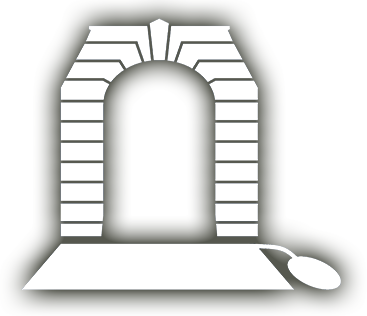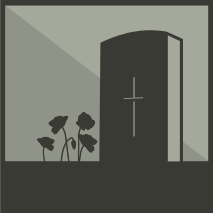LONG, George Merrick
| Service Numbers: | Not yet discovered |
|---|---|
| Enlisted: | Not yet discovered |
| Last Rank: | Captain |
| Last Unit: | Australian Army Chaplains' Department |
| Born: | Carisbrook, Vic., 5 November 1874 |
| Home Town: | Bathurst, Bathurst Regional, New South Wales |
| Schooling: | Not yet discovered |
| Occupation: | Church of England Bishop of Bathurst |
| Died: | England, 9 July 1930, aged 55 years, cause of death not yet discovered |
| Cemetery: | Not yet discovered |
| Memorials: |
World War 1 Service
| 5 Jan 1918: | Involvement Captain, Australian Army Chaplains' Department, --- :embarkation_roll: roll_number: '1' embarkation_place: Adelaide embarkation_ship: HMAT Borda embarkation_ship_number: A30 public_note: '' | |
|---|---|---|
| 5 Jan 1918: | Embarked Captain, Australian Army Chaplains' Department, HMAT Borda, Adelaide |
Help us honour George Merrick Long's service by contributing information, stories, and images so that they can be preserved for future generations.
Add my storyBiography contributed by Sharyn Roberts
George Merrick Long (1874-1930), Anglican bishop and educationist, was born on 5 November 1874
at Carisbrook, Victoria, youngest son of English parents William Long, grocer, and his wife Eliza, née Merrick. On leaving Maryborough Grammar School he entered the local branch of the City of Melbourne Bank. He was encouraged to matriculate by his vicar, Canon Charles Harris, who also instructed him in public speaking and persuaded Archbishop Goe to offer him the Rupertswood theological studentship at Trinity College, University of Melbourne (B.A., 1899; M.A., 1901). In 1897, after gaining first-class honours in inductive logic and mental philosophy, he was awarded a Hastie exhibition and the Trinity College Dialectic Society's medal for oratory. Long was made deacon on
28 May 1899 and priested on 10 June 1900. From 1899 he had charge of the district of Foster in Gippsland where the church and rectory had recently been destroyed by a bushfire. At Maryborough on 4 July 1900 he married Felecie Alexandra, daughter of Alfred Joyce.
Long returned to Melbourne as senior curate to Archdeacon Hindley at Holy Trinity Church, Kew.
Here he suggested the foundation of a boys' school despite opposition from the council of
Melbourne Church of England Grammar School; after twelve months as a preparatory school, Trinity Grammar School accepted boys of all ages and Long became headmaster in 1904. He adopted a modern curriculum and exercised that 'mysterious gift of personality which excites the personal devotion and enthusiasm of the boys. He had dignity without stiffness, and a very approachable friendliness of manner without familiarity'. An outstanding headmaster, he declined the wardenship of St John's Theological College, St Kilda, offers of important parishes and nomination for the headmastership of Geelong Church of England Grammar School. He served on several diocesan committees and in 1910 was made a canon of St Paul's Cathedral. When in May 1911 Long was elected to the see of Bathurst, New South Wales, he became one of the few Australian-born bishops. Consecrated on 30 November 1911 in St Andrew's Cathedral, Sydney, he immediately began revising antiquated diocesan finances and ordinances and was awarded a Lambeth D.D. in 1912.
In November 1917 Long enlisted in the Australian Imperial Force as a chaplain and honorary captain. He embarked for London in January and early in April went to the Australian Reinforcement Camp in France, where his abilities were recognized by Major General Sir Brudenell White. Transferred to Australian Corps Headquarters, he was promoted on 1 June honorary lieutenant-colonel and appointed director of education with the task of organizing professional, technical and general training (particularly in agriculture).
Returning to London in September Long and his small staff by Herculean efforts set up the administrative machinery. He secured the co-operation of British (and European) universities, professional, technical, commercial and industrial institutions and many other groups and individuals, such as the British Wool Buyers' Federation, a perfume manufacturer in France and Albert Mansbridge, founder of the Workers' Educational Association. Teaching within the divisions was hampered by lack of books and paper and the movement of the men, but after the Armistice 'non-military employment' was found for many. Some 12,880 soldiers and nurses completed courses of training or work-experience and many thousands more participated. In March Long's health broke under the strain. He was promoted brigadier general on 1 January 1919, awarded an honorary LL.D. by the universities of Cambridge (1918) and Manchester (1919) and appointed C.B.E. in 1919.
In July Long returned to his diocese, where he began to expand educational opportunities. He resuscitated All Saints' College, Bathurst, on a new site; in 1925 he opened Marsden School for Girls at Kelso; he encouraged the founding in large country towns of hostels for boys and girls from bush homes attending public high schools; he supported the re-establishment of St John's Theological College at Morpeth; and he promoted the training scheme of the Brotherhood of the Good Shepherd, Dubbo, which assisted men without means to enter the priesthood. In 1920 he began the rebuilding of his crumbling cathedral to a towering design by Louis Williams; the sanctuary, choir and warriors' chapel were consecrated in November 1927. In 1920 he had become foundation president of the national council of the Church of England Men's Society and, a Freemason, was grand chaplain of United Grand Lodge in 1923-26. With the help of (Sir) John Peden, he drafted and cogently advocated a constitution for the Church of England in Australia independent of the Church in Britain; his draft, by 1928 ratified by every diocese except Sydney, became the basis of all subsequent versions. He favoured conservative revision of the Book of Common Prayer and deplored the 'paralysis of fear' besetting both those who wanted it retained and those who deemed Australian churchmen 'intellectually incompetent' in liturgical studies. A democrat and nationalist, he advocated the White Australia policy on grounds of racial purity and industrial harmony, and as politically expedient for a 'high-spirited people' in an 'active and mobile young democracy'.
In December 1927 Long was elected bishop of Newcastle and enthroned on 1 May 1928. He had a sensitive knowledge of economic and industrial issues and was popular with the mining unions on the Newcastle coalfields. He had retained his connexion with the Australian Military Forces and in 1929 was appointed chaplain-general. In March 1930 he sailed for England to attend the Lambeth Conference in London, but suffered a cerebral haemorrhage after its opening session and died on 9 July in St Thomas's Hospital. His requiem was celebrated by Archbishop Cosmo Lang before 300 bishops, and his ashes were brought back to New South Wales and placed in All Saints Cathedral, Bathurst. He was survived by his wife, three sons and three daughters; his eldest son Gavin Merrick (1901-1968) became official historian of World War II.
Tall and dignified, with smooth dark hair and regular features, Long was a fine athlete, cricketer and tennis player when young. Although he was a High Churchman, but not an Anglo-Catholic, his charm and administrative gifts were recognized by all Anglicans. To Charles Bean he was 'one of the great Australians of his generation', whose outstanding work may well have been his contribution to the 'turning of the A.I.F.'s effort from destruction to construction'. St Christopher's chapel in Christ Church Cathedral, Newcastle, is his memorial, and a window of its Tyrrell chapel contains his portrait.
http://adb.anu.edu.au/biography/long-george-merrick-610











